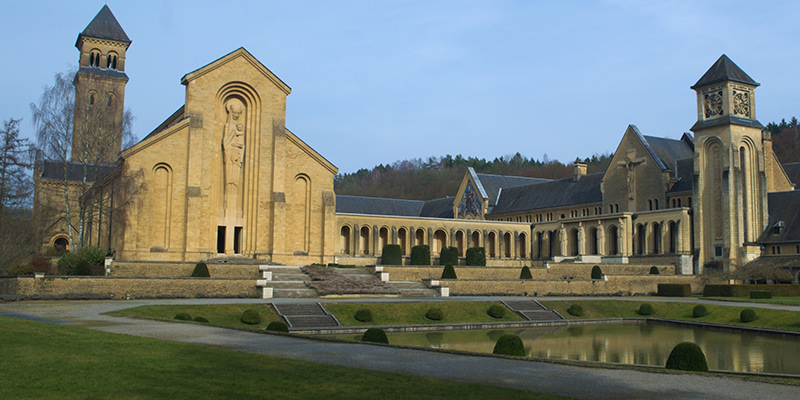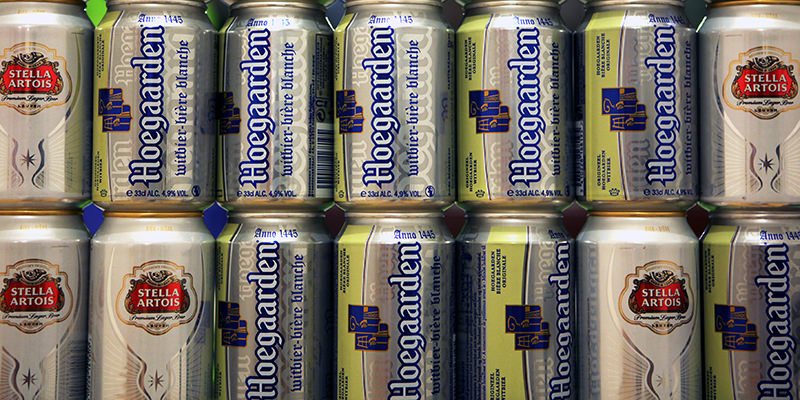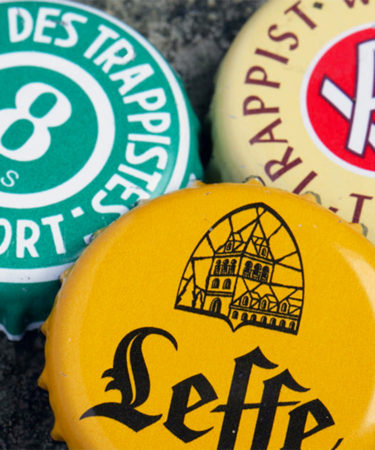You may ardently love it —or think you hate it—but there’s still probably something you don’t know about Belgian beer. For one, it’s incredibly hard to qualify what “Belgian beer” actually is. (Except, that is, that it’s made in Belgium.)
And then there are all the confusing religious terms —Trappist, abbey, Duvel (yeah, that means Devil). There’s also the spice question, plus filtration, plus bottle conditioning, plus an insane amount of branded glassware. Before your head falls off, or into that goblet of Dubbel, we’ll help you sort out some of the more confusing and/or awesome facts of incredibly multifaceted Belgian beer.
We basically owe Belgian beer to a Saint.
You don’t have to kneel before it (unless you really love it) but Trappist beer is actually made by Trappist monks, a Catholic religious order that follows the Rule of Saint Benedict. And that rule was written all the way back in 530 A.D., advocating poverty and manual labor among other principles. According to the book “Brew Like a Monk,” the rule “to this day remains the reason why monks brew and sell beer.” And the reason secular Belgium brews so much beer is because monks did, for so long, before them.
Speaking of monks, “Abbey” beer isn’t necessarily made in an abbey.
Whereas all Trappist beer must be made—and is often sold—on the property of the Trappist abbey religious order, so-called “Abbey” beers aren’t. In fact, the whole “Abbey” thing might simply be a branding tool used by a commercial brewery to associate itself with the long tradition of monk breweries in Belgium. Except, yeah, no monks at the helm. Just regular ol’ people.
The monks who DO brew beer aren’t pounding it.
Monks can and do drink, but they aren’t brewing all that beer for party purposes. While they’re not allowed to engage in secular life, they are allowed—pledged, in fact—to support their abbeys and charitable endeavors. One way they’ve been supporting themselves for centuries—brewing beer.
Speaking of centuries, Belgians have been brewing for, well, centuries.
Belgians, specifically Belgian monks, have been brewing beer since well before 1000 A.D. Again, according to “Brew Like a Monk,” as far back as 750 A.D., “Charlemagne and his followers [promoted] the Benedictine way of life and monastery brewing.”

Considering that timeline, Belgian beer is super hard to categorize.
Belgium might be one of the tinier countries in Europe (about the size of Maryland), but that hasn’t stopped them from producing an insane variety of beers. The basic reason is a contradiction: Belgian brewers care as much about tradition as they do individuality. That’s why one Saison, for instance, might taste substantially different from another. There are parameters, but room for exploration—and explore they do. (Which is why craft beer actually owes some of its wild innovation to Belgian brewing traditions.)
For instance, “Trappist” beers have their own confusing subcategories.
If you’ve ever seen a Dubbel, Tripel, or Quad, you’ve seen the main three categories of Trappist ale. Unfortunately, despite the seemingly obvious numerical progression, the beer styles are very different. (To be fair, they do go up in range in terms of ABV, with Quads topping out at 10-13%.) Dubbels are rounder and fruitier than Tripels, and Quad takes on a whole—heavy—category of their own. It’s delicious confusion.
Despite all this saintliness, there is a famous Belgian beer named “Devil.”
Well, Duvel, the Belgian word for it. Kind of like the Trappist Tripel (see how confusing it gets?), Duvel is deceptively drinkable—light, a bit spicy and fruity. But because it was brewed after WWI, it was originally called “Victory Ale”—that is, until someone at a tasting in 1923 supposedly exclaimed “This is a real Duvel!” The rest is delicious, devilish history.
Speaking of “history,” your favorite Witbier was almost history.
The witbier style—the cloudy, slightly spicy, citrusy wheat character you’ll find in Hoegaarden, UFO White, or Blue Moon (we’ll get to that)—was popular for centuries (since the 15th, basically). But the style was almost completely wiped out. Who was the culprit? Not some crazy Belgian bar crawl, but the rise of Pilsner. Europe fell hard for the crisp, bottom-fermented stuff, but one man, Pierre Celis, brought the style back, opening his own brewery in Hoegaarden 1966 just to brew witbier. (Celis eventually had to sell his brewery, though Hoegaarden is still brewed by Ab InBev.)

Blue Moon isn’t a Belgian beer.
For that matter, neither is UFO White, or Hitachino, or any other Belgian style beers that aren’t made in Belgium. While it is incredibly hard to categorize Belgian beer, one requirement is simple: it’s gotta be brewed in Belgium. Which reminds us, despite the name, Ommegang isn’t brewed in Belgium. It’s from Cooperstown, New York, home to the Baseball Hall of Fame — although the brewery is owned by Duvel Moortgat.
No, not all Belgian beers are spiced.
Coriander is not a requirement and in fact is absent from many styles of Belgian beers. Just like how some but not all Belgian beers are made with wild fermentation or lactobacillus (adding tartness via lactic acid), or how some but not all Belgian beers are unfiltered, resulting in a milky appearance. Basically, variety is the spice—so to speak—of Belgian beer. Among the spiced beers you’ll find are styles like Dubbel, Witbier, and Saison.
Though most Belgian beer is bottle conditioned.
Bottle conditioning, if you remember, is what happens when the beer isn’t pasteurized, allowing living yeast to remain in the bottle. Since the yeast can continue to snack on sugars in the beer, this means Belgian beers will carbonate in the bottle itself. Many beers are force carbonated, but bottle conditioning creates a richer, finer (and often higher) level of carbonation within the body of the beer itself.
You probably can’t hate Belgian beer.
Why? Because there are so very many Belgian beer styles, chances are, you’re going to like one of them, whether it’s a rich heavy Quadrupel, a spicy farmhouse Saison, a tart, fruity Flemish red, or a sweetly tart Fruit Lambic. And yeah, those are just four of about a billion styles.
Once you pick your favorite Belgian style, you’ve gotta pick a glass.
Not that there’s a glass for every beer. But almost. Belgian breweries have taken to creating corresponding glassware for their beers—an incredibly clever marketing tool, if you think about it. It’s an instruction (here’s how to drink the beer), a souvenir, and branding all in one. A good way to emphasize the character of your beer. (Trappist ales, e.g., come in goblets. Amen.)
